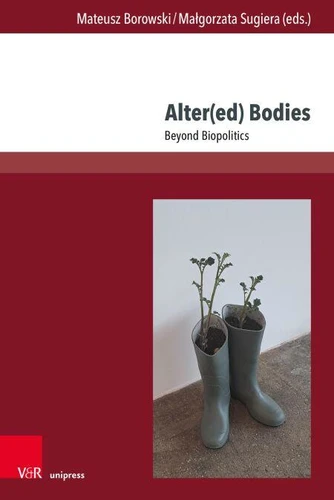Nouveauté
Alter(ed) Bodies. Beyond Biopolitics
Par : , , , ,Formats :
Disponible dans votre compte client Decitre ou Furet du Nord dès validation de votre commande. Le format PDF est :
- Compatible avec une lecture sur My Vivlio (smartphone, tablette, ordinateur)
- Compatible avec une lecture sur liseuses Vivlio
- Pour les liseuses autres que Vivlio, vous devez utiliser le logiciel Adobe Digital Edition. Non compatible avec la lecture sur les liseuses Kindle, Remarkable et Sony
 , qui est-ce ?
, qui est-ce ?Notre partenaire de plateforme de lecture numérique où vous retrouverez l'ensemble de vos ebooks gratuitement
Pour en savoir plus sur nos ebooks, consultez notre aide en ligne ici
- Nombre de pages238
- FormatPDF
- ISBN978-3-8470-1884-1
- EAN9783847018841
- Date de parution14/07/2025
- Protection num.pas de protection
- Taille2 Mo
- Infos supplémentairespdf
- ÉditeurV&R Unipress
Résumé
The fundamental assumption behind the volume is that the current civilizational crisis, manifested in such phenomena as climate change, environmental catastrophes, pandemics and wars, puts into question the biopolitical means of optimizing the life of populations and individuals. To narrow down the thematic concerns of the volume, the chapters are centered around the notion of body, fundamental for the majority of theoretical takes on biopolitics.
The volume shows that in the current age of catastrophes bodies are not only shaped and individualized through procedures of institutionalized discipline, but by an entanglement of environmental and planetary factors, typically omitted in extant accounts of biopolitics. The chapters go beyond biopolitics, because they show bodies as sites of operation of non-human or more-than-human agencies that work on scales inaccessible to human sensorium.
The volume shows that in the current age of catastrophes bodies are not only shaped and individualized through procedures of institutionalized discipline, but by an entanglement of environmental and planetary factors, typically omitted in extant accounts of biopolitics. The chapters go beyond biopolitics, because they show bodies as sites of operation of non-human or more-than-human agencies that work on scales inaccessible to human sensorium.
The fundamental assumption behind the volume is that the current civilizational crisis, manifested in such phenomena as climate change, environmental catastrophes, pandemics and wars, puts into question the biopolitical means of optimizing the life of populations and individuals. To narrow down the thematic concerns of the volume, the chapters are centered around the notion of body, fundamental for the majority of theoretical takes on biopolitics.
The volume shows that in the current age of catastrophes bodies are not only shaped and individualized through procedures of institutionalized discipline, but by an entanglement of environmental and planetary factors, typically omitted in extant accounts of biopolitics. The chapters go beyond biopolitics, because they show bodies as sites of operation of non-human or more-than-human agencies that work on scales inaccessible to human sensorium.
The volume shows that in the current age of catastrophes bodies are not only shaped and individualized through procedures of institutionalized discipline, but by an entanglement of environmental and planetary factors, typically omitted in extant accounts of biopolitics. The chapters go beyond biopolitics, because they show bodies as sites of operation of non-human or more-than-human agencies that work on scales inaccessible to human sensorium.



